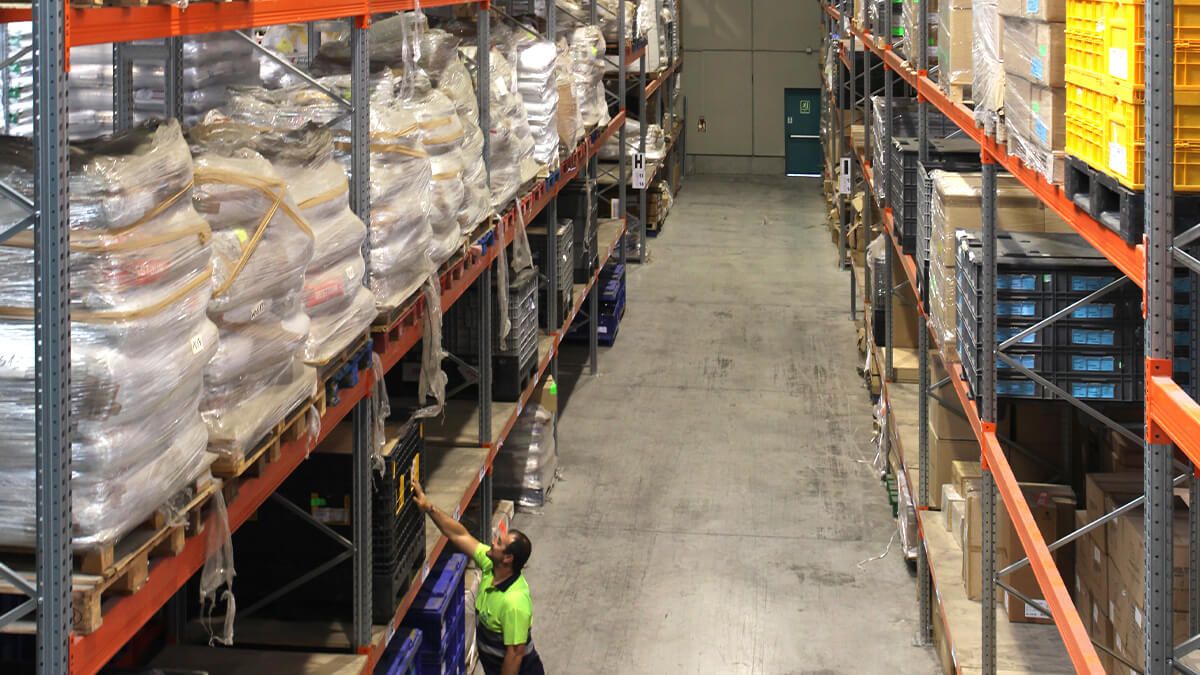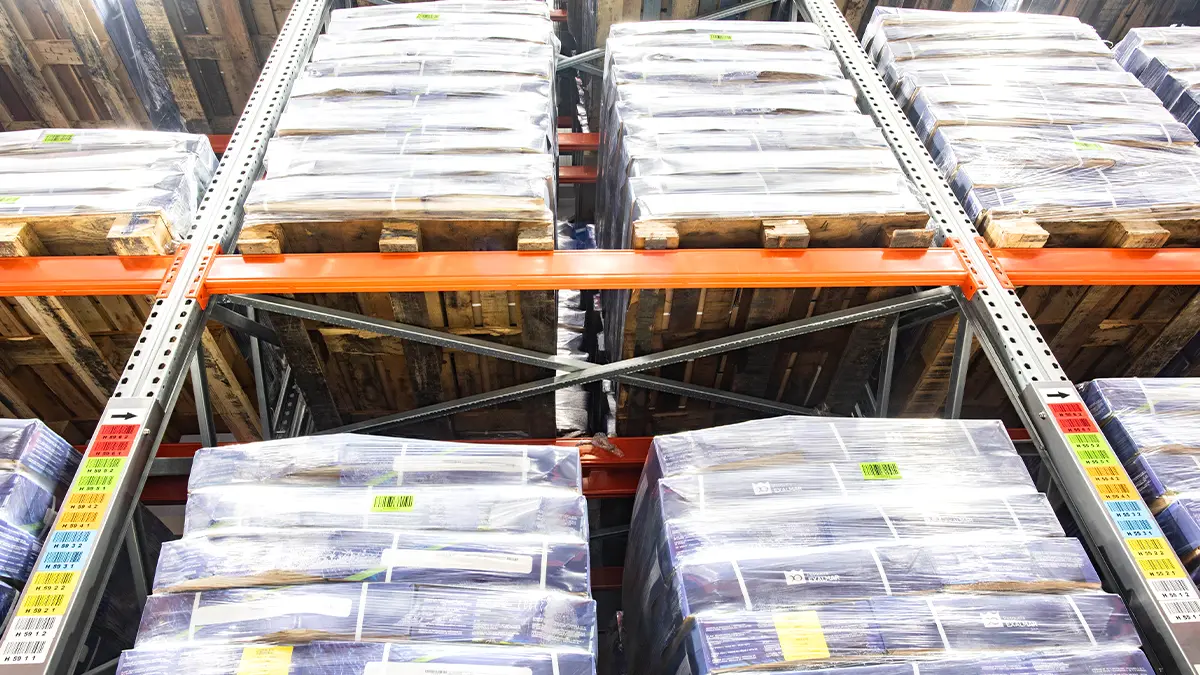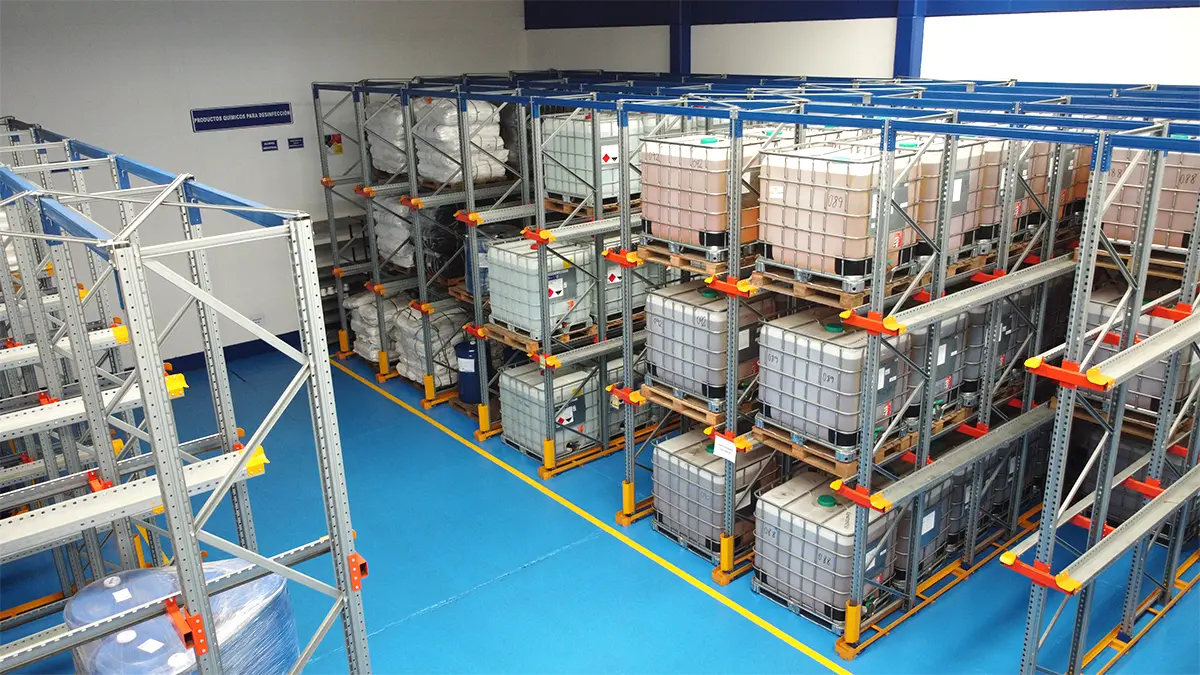In one of our previous publications, we looked at how to correctly manage warehouse inventory, and then reviewed the different types of stock or stock classifications to determine which is the most appropriate for each company’s logistics management.
What is stock and how important is it to a company?
Stock, also used as a synonym of inventory, refers to all or the quantity of products that a company has stored. Both raw materials and finished products can be considered products in stock, provided these materials are stored ready for their entry into production or final sale.
The initial premise must always be that stock is an investment made by the company to meet demand or production needs and to be able to perform its activity normally.
As with all investments, a future return is expected to be obtained from stock and therefore the decision on the amount of stock to store and method chosen for its management is of vital importance to achieve the company’s goals.
What is the appropriate stock or inventory level? The great dilemma
This important question is asked when trying to determine the appropriate stock or inventory level for a warehouse; the answer is simple but its implementation far more complex.
A company’s correct stock level will always be that which gives it its highest return; generally, that level is obtained by fully guaranteeing internal or external demands (depending on whether it is a raw material or final product) without accumulating excess stock in the warehouse.
The ideal situation would always be having just enough stock to meet all demands, but without having excess stock that would reduce the return. However, in reality, such a logistics situation is virtually impossible to implement in a warehouse due to the difficulty of maintaining this complex balance.
To bring us closer to this ideal situation, we need to have an ultra-efficient network of suppliers to meet our demands in very reduced timeframes and a supply chain that works perfectly. And very accurate demand forecasting throughout the year.
One of the biggest risks of not having a sufficient level of stock is “stock depletion”, that is not having enough stock to meet demand. Apart from the amount not received due to unprocessed orders, stock depletion would cause major problems with distributors and customers and a notable loss of confidence in future.
What are considered to be appropriate stock levels may vary entirely from one company to the next in the same sector, so it is important to know the different types of existing stock and their classification.

Stock types and classification (inventories)
There are various ways of classifying and organising the different types of existing stock, and choosing one or the other will depend on our assessment of the type of company, available space and the storage system.
The most common categories for classifying the different types of stock are classification by their expiration date, functionality and operation.
Types of stock according to their expiration:
This is the simplest classification of the 3, which mainly separates the products into 3 large groups (2 very similar to each other).
Non-perishable stock
Non-perishable stock is made up of products and material that do not deteriorate over time and which can therefore be stored for long periods without losing their original properties. An excess amount of this type of stock will not be unduly worrying.
Perishable stock
Products considered perishable are those which for their composition or conditions may suffer rapid deterioration and lose their original properties over time due to external elements. The stock management of perishable products is quite complex as any stock delay or error in the warehouse may render the stock unusable and cause major losses.
Stock with expiration date
The so-called stock with expiration date may also include perishable stock, as many perishable products also have a best before and use by date.
It also includes those materials which, even if they do not deteriorate over time, have a best before date for their correct use.

Types of stock by their functionality:
Cycle stock or active stock
Cycle or active stock is the amount of stock that a company needs to have in the different areas of its warehouse to meet usual customer or distributor demand over a long period of time.
Minimum stock
Minimum stock or inventory is the minimum amount of stock that a company can allow itself to have in its warehouse; below this level would lead to stock depletion. If a warehouse has minimum stock of any product on its racking, a new order must be made to increase the stock level.
Maximum stock
Unlike minimum stock, maximum inventory or stock is the amount of stock stored that must not be exceeded, and would be the maximum level. Maximum stock can be defined by product demand, available space or the storage capacity of the industrial racking.

Safety stock
Safety stock is similar to minimum stock in that it defines a minimum quantity of product to be held in stock to cover exceptional or unforeseen situations such as delays. Safety stock helps to prevent stock depletion.
Stock in transit or on-order stock
Stock in transit is considered to be stock that is found in some of the internal processes of the company: production process, packaging, despatch and delivery, etc.
Seasonal stock
We talk about seasonal stock when referring to goods that are held in stock in anticipation of a specific increase in sales at a certain time of the year. One of the clearest examples of seasonal stock is that which many consumer companies hold in their warehouses in the months before Christmas.
Recovery stock
Recovery stock is made up of products with a second life and which by their characteristics can be fully or partially reused. This is stock that has left the company and which is therefore no longer part of the warehouse stock. This type of stock is closely related to the concept of reverse logistics.
Dead or inactive stock:
Dead stock refers to the inventory of obsolete merchandise that cannot be resold or reused and which must therefore be removed from the warehouse. For example, an excess stock of perishable products may generate what we call dead stock.
Speculative stock
Speculative stock refers to the stockpiling of larger amounts of stock than are necessary in the usual warehouse operations due to the speculative forecast that the sales or price of a product will rise in the near future, therefore taking advantage of the situation.
Types of stock by their operation:
This inventory classification considers the daily operations of a company’s warehouse.
Optimal stock
As previously mentioned, optimal or appropriate stock is considered to be the level of stock that offers the highest return to the company. In other words, the level of stock that maintains the perfect balance between meeting demand and maximum reduction in storage costs.
Zero stock
Zero stock is the amount of stock indicated in the Just In Time (JIT) management system, which is characterised by meeting make-to-order demand, and therefore drastically reducing the inventory of stock in the warehouse. Zero stock or inventory is common in sectors such as the automotive industry.
Physical stock
Physical stock is the amount of stock available at any given time in the warehouse.
Net stock
So-called net stock is achieved by deducting from the amount of stock or inventory in the warehouse, the amount of stock demanded not yet met.
Available stock
This is obtained by adding the current stock in the warehouse and the stock that will be generated with the orders to suppliers that are in progress, and deducting the stock demanded and to be met.




